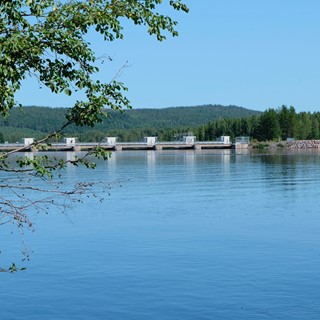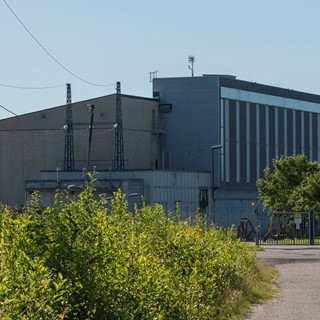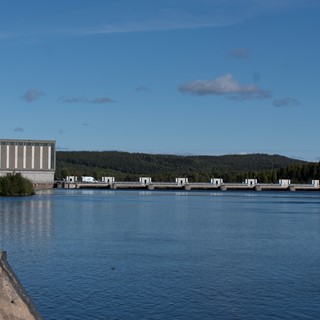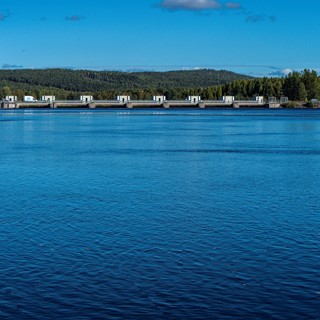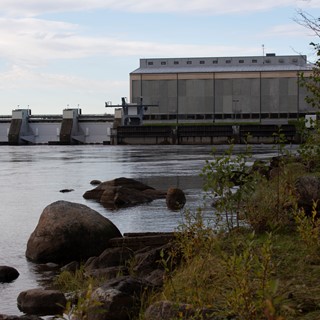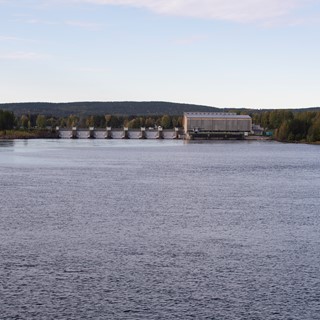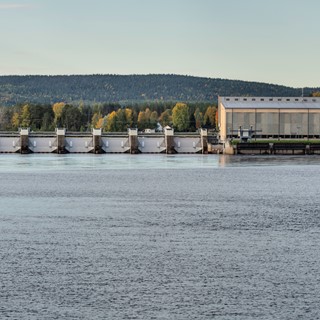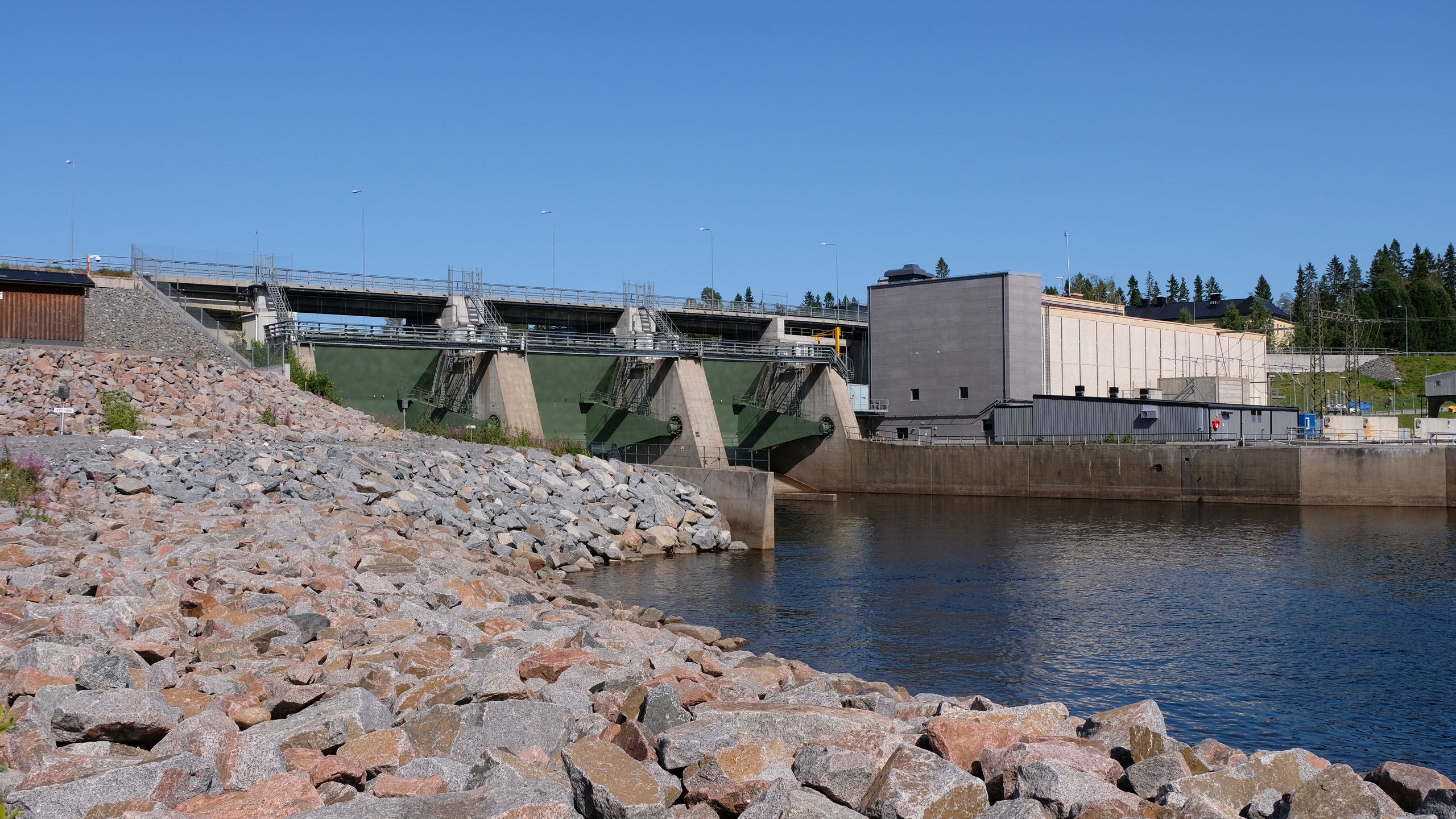History
The power of Vittjärv’s water was used long before the power station was built there in the 1970s. As early as in 1849, Vittjärv’s village men were given permission to build a sawmill and a mill using water for power. The existing canal between Kvarnholmen and the mainland was improved, and two regulation dams were built between Långholmen and the mainland to form a reservoir. The saw was a frame saw, and a cutting wedge was added to it so it could produce roof shingles.
Later on, when the idea of producing electricity from hydropower garnered more interest, various proposals for facilities in the rivers of the Boden area were discussed. An early proposal from the year 1900 mentions Vittjärv as a potential site for a hydropower plant. But it wasn’t until 1971 that the power plant in Vittjärv was built.
The design of Vittjärv’s power plant is relatively unusual in Sweden, as the machine room and spillways are built directly on the ground. Normally, this would have been excavated down into the rock, but in this particular case, the rock was buried so deep down under the soil that it was cheaper to build the station on a moulded concrete foundation. The facility can be seen as a number of separate buildings loosely connected to each other to allow for some movement.
Vittjärv’s power station is the River Lule Älv’s contribution to the River Vindelälven in Västerbotten not being exploited. Following a decision that the Vindelälven was to be saved from regulation, Vattenfall was tasked by the Government to investigate alternative projects in other Norrland rivers. Eleven different proposals were presented, and Vittjärv was one of them. Construction at Vittjärv was also timely, as Boden’s power station, some ten kilometres downstream, was in the final stages of construction. Construction workers could thus simply be moved from the Boden site to Vittjärv’s facility.
The power station became the Lule Älv’s smallest power station with its 36 MW, and a head of 6 metres. To utilise the power of the low head, three Kaplan tube turbines were installed. Tube turbines mean that the water hits the turbine through a spiral, unlike the more common pipe. Apart from in Vittjärv, the only place along the Lule Älv where this type of turbine is used is Parki. In spite of Vittjärv’s low power output, the plant building is not modest, with its height of 45 metres, and seven spillways. But there are practical explanations for that. The station must be able to take in 20,000 m3/s, and since the plant is above ground, water has to be taken in using height rather than depth. The power plant was expanded for a water discharge of 680 m3/s divided over three power generation units, giving a combined power output of 30 MW.
At most, 250 people worked at the Vittjärv facility, from 1971 to 1974. Most of the workers lived in Boden, but three bachelors’ homes with room for about 90 people were built. Before construction started, a construction workers’ block was also built at Kallkällvägen in 1968. The block had 13 houses, and three more were added later. No permanent homes were built, since the facility was to be run remotely from Vuollerim.
Images
All pictures below are part of the power plant's history. All images are copyrighted. You may use the images for personal use but the images may not be used in commercial contexts or printed matter without our permission. Click on the pictures to enlarge them.
Stories
Here you can read other people's stories about the power plant. And if you have your own story, please share it. Whether you want it to be published on the site or not, we are interested in all stories.
Do you have a story about the powerplant or life around the river?
Send us your story
